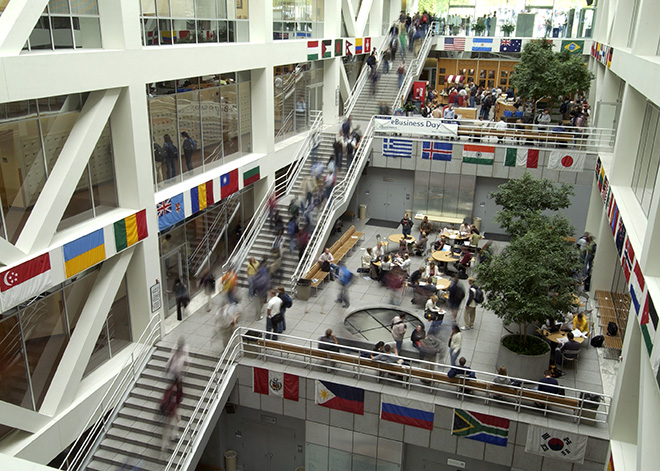
BYU. Courtesy photo
How are employers today different from before?
The big shift is that companies are focusing more on undergrad hiring, especially in finance. They’re also looking more for students with experience and knowledge in analytics, it doesn’t matter if they’re in human resources or finance. The ability to collect data and develop insights into the information to help drive decisions, and present those to middle and senior management in an effective way are big requirements today.
They’re no longer looking for students who can work in teams and manage projects. Those are a given.
Because the business world is now inundated with data, almost too much data, employers want people to come in and help them deal with big data.
It’s important that students have some level of knowledge when it comes to programming languages, but not at the level of computer science, programming, and development. It’s more about being comfortable with the tools.
To help our students stay ahead, we have an information systems program and students are put in classes early on to get familiar with a variety of different data tools. We are now developing more curriculum around analytics for every program, and building that into classroom activities. For example, the marketing division has a new faculty specialty in data analytics and we’re driving that into curriculum and projects.
We’re not yet at the point where we need to develop standalone degrees in data analytics at the undergraduate level, but we’re having conversations with other colleges about increasing exposure to subjects like statistics within the curriculum.
How are students today coming in differently from before?
Companies today are also looking at how to engage audiences, and similarly, we’ve seen students who care about things from a social perspective joining us. Our model at the Ballard Center of Economic Self-Reliance is to “Do Good. Better.” and it’s about students going out and addressing social issues. It’s a time for students to think about change and innovative work, and many of them want to work with developing countries and different parts of the world. They care more about doing good for the community around them.
Another change we’re seeing is a growing number of women who are interested in business. Currently, at BYU, the gender proportion is about 50-50, but at the business school, about 33% of students are women. However, more women are seeing opportunities in business. Our Women in Business organization has about 400 students actively involved and the number of women in our program has grown in the past four and a half years I’ve been here.
We’ve even hired our first female outside dean (Harvard Professor Brigitte Madrian), who started in January. She did her undergrad and Masters at BYU, Ph.D. at MIT, and taught at Wharton, and we’re excited by the new perspectives, vision, and possibilities that we’ll have with a female dean leading us.
The caliber of students continues to go up with each class, and the students have phenomenal academic capabilities despite our limited enrollment. Over 2,000 undergraduate students apply, and only about 1,000 are accepted. With only about 50% of applicants getting into the program, and everyone getting about a 3.7 GPA, students are really trying to balance and stand out with engagement participation to make a difference.
What advice do you have for high school students and their parents that are interested in studying business in college?
Go get exposure in the different areas and types of business. There are many unique opportunities available and you need to make use of them. For example, my son is graduating this year and we took him to visit companies in the Bay Area. He sat in with meetings with Salesforce, Hewlett-Packard, and LinkedIn.
Getting exposure helps students see and understand career possibilities. And parents really need to get involved by talking about things more to students and encourage them to reach out to people. As much as they can, seek out shadowing opportunities, visit companies, and get a better perspective on what they want to pursue.
Once they are in, students need to do more than do well in their coursework. If they don’t participate with the industry, it will cost them career opportunities. The hardest at our career center is when seniors come in and we need to scramble to get them going. Our placement rates are in the mid-90s, so obviously these cases are rare.
DON’T MISS: NEW DATA: SCHOOLS WITH THE BEST ROI or B-SCHOOLS WITH THE BEST COLLEGE EXPERIENCE











Questions about this article? Email us or leave a comment below.